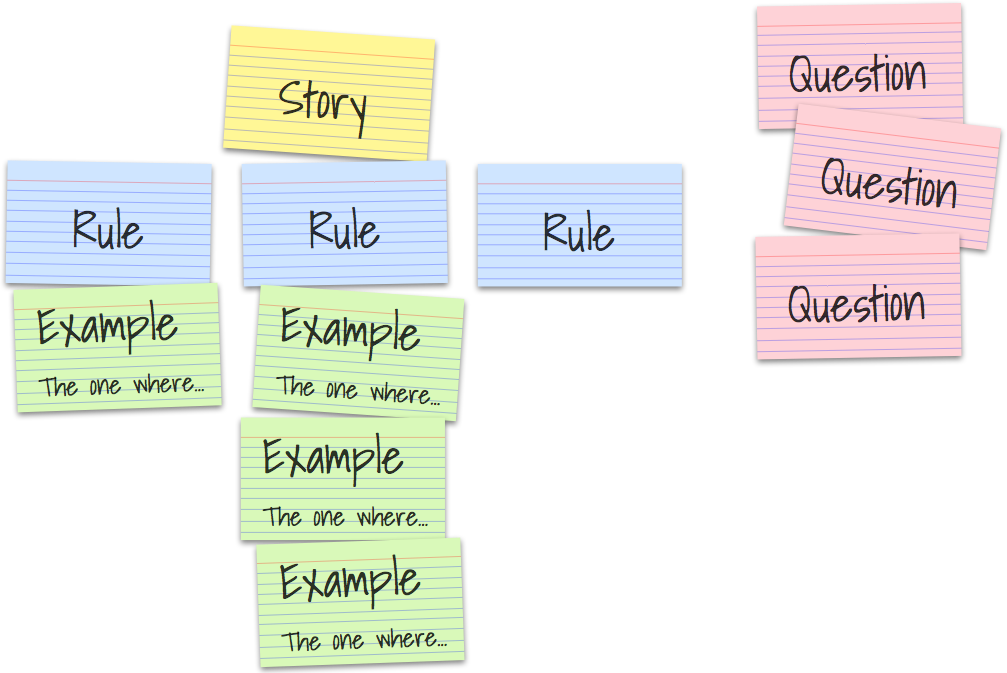Example Mapping
Concrete examples are a impactful way to help explore the problem domain and form the basis for our acceptance tests. Using the example mapping technique is a simple activity to help illustrate and breakdown stories by using examples.
What you need¶
- Whiteboard
- Index cards
- Timebox
Example mapping can also occur remotely use collaborate editing or whiteboard tools.
How it works¶
Example Mapping uses 4 colored index cards and a pen to capture these different types of information as the conversation unfolds.

- Begin by writing the story on a yellow card and placing it at the top of the board.
- Write each of the rules (acceptance criteria) that the team knows on a blue card and place under the story.
- For each rule, add examples on a green card and place it under the rule.
- As we discuss these examples, we may uncover questions that nobody in the room can answer. We capture those on a red card and move on with the conversation.
Continue until the team is satisfied, the scope of the story is clear, or time runs out.
As the examples are discussed, notice other things surfacing in the conversation which should also be captured: - rules that summarise many examples or constraints about the scope of the story. - unanswered questions or about scenarios or assumptions that were made. - new user stories discovered, sliced, or deferred out of scope.
The view tells the story¶
As the activity unfolds, a visual representation develops and communicates a story back to the team.
- A lot of red cards (questions and assumptions): too many uncertainties to move forward.
- A lot of blue cards (rules): the story is big, complicated, and should be split.
- A lot of green cards (examples): the rule might be overly complex or too broad.